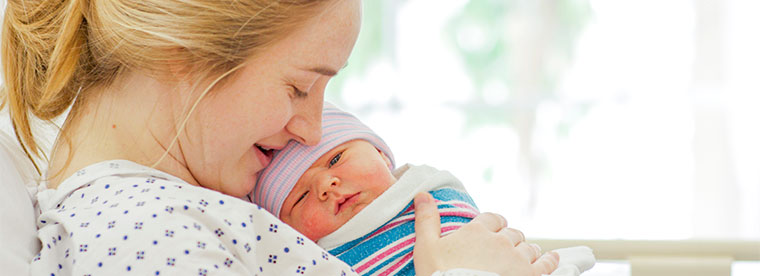Some women ask us, “I have two toddlers at home and I just want to get some sleep before I go home. Can the baby go to the nursery?” In these cases, we gently tell mom that we can’t take the baby to the nursery. We explain the benefits of sleeping when the baby sleeps. We also recommend asking a family member to stay and help so mom can get some sleep.
We make sure to talk to our moms before they have their babies about what to expect and explain why we do what we do.
We haven’t gotten rid of the nursery altogether. Some newborns need additional monitoring, but not the advanced care given in the neonatal intensive care unit (NICU). In those cases, they may spend time in the nursery. We also may do some exams or minor procedures in the nursery, but many exams are done right in the room so we don’t have to separate mom and baby.
Formula
It used to be routine for a nurse to say, “Mom is sleeping and I don’t want to wake her, so I’ll give her baby a bottle.” We don’t do that anymore.
We don’t use formula unless mom requests it or there is an issue with the baby’s or mom’s health. If you don’t want to breastfeed, we may ask you why to address any concerns you may have. We want you to understand your options and the benefits of breastfeeding. However, if you choose not to breastfeed, we will respect your decision.
Pacifiers
Artificial nipples such as pacifiers can interfere with breastfeeding, so we no longer use them in the hospital. Latching and sucking on a pacifier is different than sucking on a breast. We don’t want to confuse baby in the first few days of learning to breastfeed.
You tell us: What Baby-Friendly elements did you enjoy at your hospital, or what would you like to see in the future? Connect with us through Facebook and Twitter.
The benefits of breastfeeding
We made these changes because we know that breastfeeding has great benefits for the health of baby and mom.
Research has shown that breastmilk:
- Provides an optimal mix of nutrients
- Contains antibodies that protect newborns from certain illnesses
- Is easier to digest than formula
- Lowers the risk of sudden infant death syndrome (SIDS)
Breastfeeding also makes it easier for mom to lose the weight gained during pregnancy and may reduce her risk of breast cancer and ovarian cancer.
Learn about what to expect when breastfeeding, common problems and concerns, tips for successful breastfeeding and how to avoid sore nipples by registering for one of our breastfeeding classes.
Breastfeeding is not always easy. But by providing an environment that facilitates and supports breastfeeding immediately after birth, we hope to help you achieve your goal.

